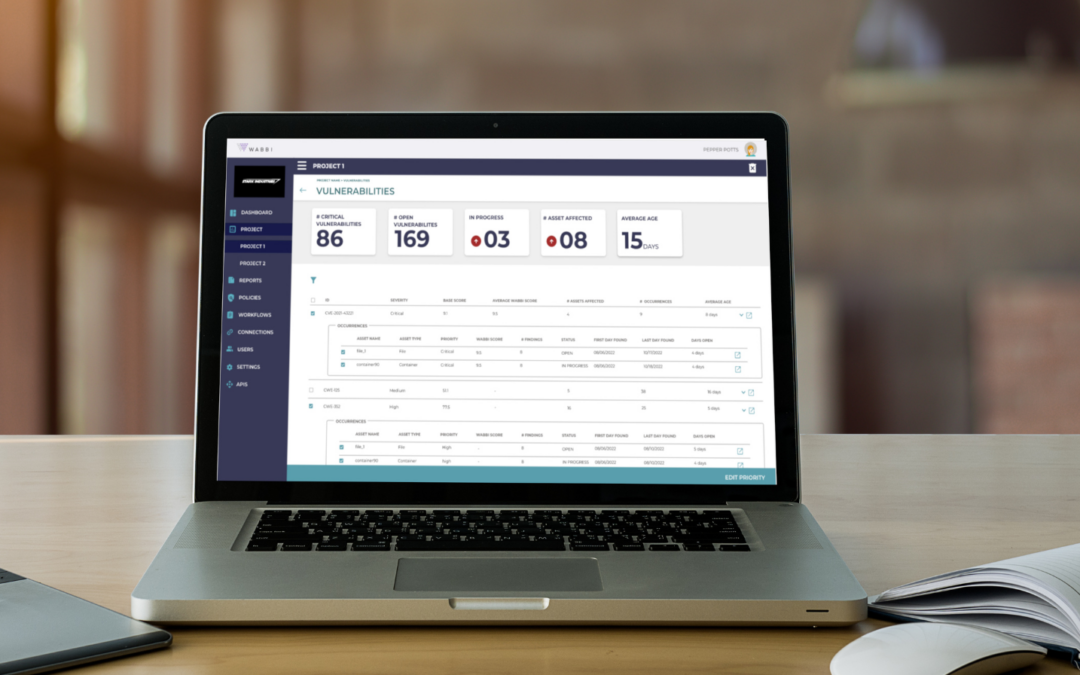Team Wabbi
April 4, 2024
Why Application Security Matters to Me:
Evaluating Application Security Posture Management (ASPM) for Developers
In today’s digital landscape, where cyber threats are constantly evolving, organizations must prioritize their cybersecurity measures to protect their sensitive data and maintain their reputation. This is the fourth in a series of blog posts that explores, from a firsthand perspective, why the various stakeholders in Application Security implement Application Security Posture Management (ASPM) as the backbone to their DevSecOps program.
In this segment, we look at the value of ASPM for the Developer..

I am a Developer…
As a developer, I play a critical role in driving innovation and delivering value to organizations through code. Amidst the whirlwind of development, safeguarding code often takes a back seat.
As a developer it’s my job to:
- Balance tight deadlines with the need for secure code.
- Deliver features that keep my organization on the cutting edge.
- Take ownership of the features I develop throughout their lifecycle.
Balancing Act: Tight Deadlines vs. Secure Code
One of the perennial challenges we developers face is the relentless pressure of deadlines. We’re tasked with delivering exceptional solutions within narrow time frames, often leaving little room for thorough security assessments. However, in the digital age where cyber threats loom large, sacrificing security for speed is a gamble we cannot afford to take. ASPM provides us with the guardrails that allow me to strike a balance between meeting deadlines and ensuring code integrity. By integrating security measures into our development process, we can mitigate risks without compromising on efficiency or innovation.

Navigating the Sea of Alerts: Innovation Amidst Security
Innovation thrives on exploration and experimentation, yet the constant stream of security alerts can feel like navigating through turbulent waters. We alerts can feel like navigating through turbulent waters. We strive to push boundaries, to dream big and create bold solutions, but the fear of overlooking critical vulnerabilities can stifle our creativity. ASPM acts as our guiding light in this sea of alerts, filtering out the noise and providing actionable insights. By prioritizing critical issues and offering concise recommendations, ASPM empowers us to innovate with confidence, knowing that our features are not introducing risk to the application or company.

Seamless Integration: Where Security Meets Development
For too long, “secure coding” has meant hours of sitting in security training and being expected to remember the exact right thing to do, even though policies and applications change. With ASPM, security is actually integrated into my workflows, so I can keep my focus on efficiently delivering quality code and not becoming a security expert. By embedding security into the development lifecycle, whether delivering the secure coding guidelines directly to me as part of the feature ticket, automatically kicking off the testing based off of my PR, or integrating only the vulnerabilities I need to fix back into my backlog, ASPM streamlines the integration of my security responsibilities, making it an natural part of my coding workflow. This not only enhances the quality of my code by ensuring it is secure, but also enables me to be more efficient.
Why ASPM for me?
ASPM is crucial as it streamlines security processes, allowing me to focus on coding without being overwhelmed by distractions. By integrating security practices early on, ASPM ensures I do my part in ensuring our organization’s cyber-resilience, without adding additional workload or creating bottlenecks.
- Empowering Innovation: With ASPM‘s safety net, I can innovate fearlessly, pushing boundaries and exploring new horizons, while understanding the security requirements I need to implement
- Cutting Through the Noise: ASPM makes sure I have the exact information I need at the right time to complete my security requirements so I don’t have to figure it out on my own
- Efficient Secure Coding: By integrating security practices throughout the software development cycle, ASPM saves me from costly reworks and ensures our code remains resilient.
- Peace of Mind: With ASPM, I’m no longer waiting for the ball to drop on a feature being returned because it didn’t pass a security review, nor am I spending a lot of manual time that could be dedicated to coding trying to figure out the right security thing to do
Are you ready to capture the benefits for yourself or your Developers?
Learn more about Wabbi, the industry’s only universal Application Security Posture Management platform that allows security and development to become integrated without disrupting either of their existing workflows.
Related Articles

Why Dev Sec Ops Is the Key to Preventing Cybersecurity Risks
In today’s hyperconnected world, cybersecurity isn’t a nice-to-have — it’s a necessity. Yet, for many organizations, security is still an afterthought in the software development process. In a recent podcast interview, Brittany Greenfield, Founder and CEO of Wabbi,...

The Wabbi Wire: What’s the Big Deal about ASPM?
Wabbi Wire: What's the Big Deal about ASPM? Application Security Posture Management (ASPM) is more than just another security acronym—it’s the key to turning DevSecOps from a buzzword into a business enabler. The challenge? Security and development teams often speak...

AI and DevSecOps : Empowering the Workforce
AI and DevSecOps: Empowering the Workforce The cybersecurity industry is at a pivotal moment, facing a confluence of challenges, from a growing talent shortage to the increasing complexity of threats. Artificial Intelligence (AI) has emerged as both a solution and a...

DevSecOps in Digital Transformation
Click below to listen to this episode of Digital Shifts aka Corporate Evolution Tales, where host Mariam sits down with Brittany Greenfield, founder and CEO of Wabbi, to discuss how to align security with business goals, and why transformation is a continuous...
No Results Found
The page you requested could not be found. Try refining your search, or use the navigation above to locate the post.